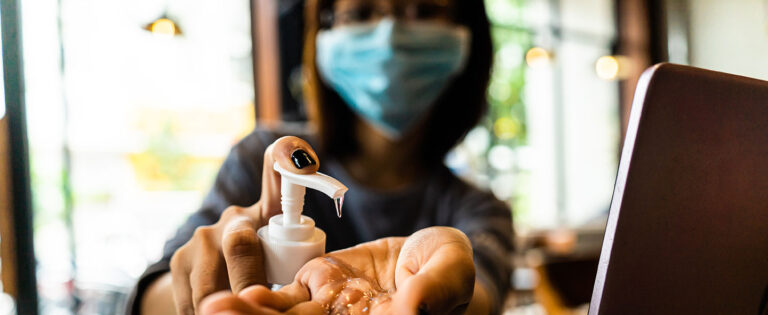
The birth of the hand sanitizer campaign.
When the COVID-19 pandemic reached the United States in early 2020, the world was a ball of confusion. Questions seemed to abound — answers too, but not all those answers were sound and science-based. At the time, the public didn’t know a lot about the virus and how it was transmitted. As people strained to remain safe and healthy, the demand for hand sanitizers skyrocketed. In response, more than 3,500 new hand sanitizer manufacturers popped on the scene and the U.S. Food and Drug Administration (FDA), Center for Drug Evaluation and Research (CDER), Office of Communication (OCOMM)’s Division of Drug Information (DDI) began to receive reports from the public regarding quality problems, hand sanitizers packaged in containers that look like children’s food pouches, beer cans or other drinks, and adverse health events associated with ingestion and poisoning, including death.
Most people aren’t aware of the fact that hand sanitizers are considered a drug, regulated by the FDA’s CDER. CDER‘s mission is to ensure that safe and effective drugs are available to improve the health of people in the United States. CDER’s Office of Communication stepped in to help with the hand sanitizer communication conundrum. Their mission was clear and immediate: debunk misinformation, warn consumers about risks, call attention to the availability of the do-not-use list, and provide continued guidance to ensure hand sanitizers are manufactured according to good manufacturing practices.
The content strategy and development.
The social media team in OCOMM DDI, a group of about 15 pharmacists, were dedicated to using their scientific training to guide Americans through the stormy, unprecedented terrain of the pandemic. While they utilized traditional communication channels such as email and phones to respond to public inquiries, social media was used as the quickest way to reach the most people with critical information. Members of the team would rotate between developing social media messaging and responding to comments, emails, and phone calls. They also conducted social listening to remain abreast of key, recurring discussion points and information gaps across all mediums.
“We’re here to be of service. Especially in recent times, we try to be that authority that provides accurate, science-based information.” — Raj Patel, FDA Pharmacist
The social media team analyzed the types of questions asked during phone calls, in email correspondence, and on social media to determine knowledge gaps and areas of misinformation. That intel was used by OCOMM to develop educational content including consumer guides, traditional social media posts, as well as a hand sanitizer quiz. Responses from the quiz — incorrect answers in particular — contributed to the creation of supplemental materials for each topic of confusion, including additional educational outreach. A web version of the quiz was also created and posted on the FDA website, then distributed to email subscribers. A new hand sanitizer poll question was asked every Tuesday and Thursday on the FDA’s Twitter and Facebook accounts. That format — with the correct answer displayed after a response was submitted — helped to either reinforce an accurate understanding or correct a misconception.
The results.
The hand sanitizer campaign helped address — and eliminate — confusion related to sanitizing wipes for surfaces versus hands, accidental ingestion, side effects, subpotent and contaminated products, COVID-19 prevention myths, and more. In the second quarter of 2020 alone, DDI received 7,023 inquiries about COVID-19 (4,025 were specifically about hand sanitizers). The 10-question hand sanitizer quiz received 14.6K total votes, 633K total impressions, and 15.5K total engagements. Notable organizations like CNN, as well as a dozen state poison control centers, reposted, retweeted, and promoted the quiz to their networks.
From a public health perspective, the campaign was also a huge success. CDER was able to identify and stop the distribution of contaminated hand sanitizers and warn people, especially parents, guardians, daycares, and school systems about improper storage, tainted products, unsafe or ineffective practices, and misleading packaging targeting young children. The success of CDER’s hand sanitizer campaign has influenced their overall communications strategy going forward. They now make a concerted effort to listen for misinformation and respond immediately with science-based comments, posts, stories, quizzes, events, and other engaging methods to dispel harmful or false information.
Covid has been a game-changer for every public and private sector organization. Download this guide for tips toward digital service that can help you provide convenient, personalized solutions for residents in good times and bad.